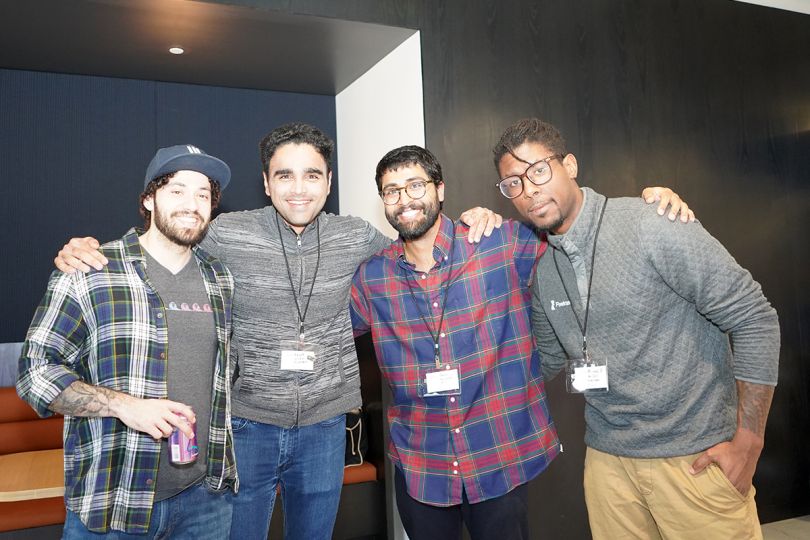When Fivetran SVP of Engineering Helge Scheil reflects on cultivating innovation at the Oakland-based company, he emphasizes two words: “Simple and reliable.”
As Scheil explains, pushing the data integration space forward means providing an intuitive solution that lessens the burden on customers aiming to consolidate data from different sources.
“In essence, what we’re doing is substituting or augmenting data engineering services that customers used to operate themselves — or in many cases still do — and redirecting that energy into really doing something with the data,” Scheil said. “So the need to innovate comes first and foremost from our customers, because they want to hand over their entire data movement to us.”
Importantly, when it comes to developing forward-thinking capabilities, offerings and solutions for customers of Fivetran, it’s not all about tech talk with the team. And with a valuation of $5.6 billion, that working relationship must be thriving.
"We’ve created a culture that allows for that level of communication and input from other departments to help us row in the same direction,” Rachel Roy, an enterprise account executive, said. “From a sales perspective, having the ability to call engineering or product and get what we need really allows us to push the envelope in terms of different use cases and companies that we’re breaking into and supporting.”
According to Scheil, innovation can manifest in different ways at the data pipeline management company. On one end of the spectrum, it might be subtle and behind the scenes, like endeavoring to simplify the codebase during a design review. Other times, it might be more pronounced.
“We’ve recently offered additional regions where we process companies’ data. It used to take four to five weeks to spin up a new region. We innovated by automating that almost entirely,” Scheil said. “At this point, it’s really a go-to-market and financial decision, more than it is an engineering effort, to roll out and operate in a new region with one of the three major clouds. It ultimately makes things even simpler and removes friction for us internally, thereby benefiting customers.”
Meera Viswanathan, a senior product manager focused on enterprise data governance, shared Roy’s sentiments regarding teams having the space, ability and support to contribute to the end result — even if it’s not something that directly overlaps with their core domain.
“One thing that I have absolutely loved about working with the engineering team is they understand the customer just as deeply as I do. That really promotes innovation, because they can think through innovative ways to solve customers’ problems,” Viswanathan said. “And the same for our account executives — they have really insightful statements and know exactly what the customer is asking for and what the most pressing needs are.”
Below, Viswanathan, Scheil and Roy described how their respective teams contribute to innovation at Fivetran and why adhering to the basics — like respect, listening and ownership of one’s work — is essential to get the company to the next level.

What role does innovation play in furthering Fivetran’s mission?
Scheil: Because our mission is to make access to data as simple and reliable as electricity, we are in the business of moving data. As far as innovation, I would highlight two words: simple and reliable.
By simplicity, we mean making sure that customers have to make a minimum number of choices to move data from A to B without much configuration or technical knowledge. A lot of innovation goes into that. We take on the complexity so that customers don’t have to do that.
There are a lot of elements in the area of reliability. If you think about how data moves, on its surface it looks very simple. But many things can go wrong along the way. For example, the user could have changed their authentication. The data processing platform we’re running on could have issues. The destination we’re pushing data into may have an issue. There are a myriad of innovations that make it appear like it just works. But underneath the design, there are a lot of processes and tech in place to make it appear that simple.
Roy: From a sales perspective, we think about creating a product that is not reactive to the changes that are happening in the market, but rather proactively pushing the market to the next step. I think that’s one of the places where we’re uniquely innovative.
Viswanathan: One of the key values on the product team is integrity. When we’re making a decision, we really have to give our customer one simple, predictable choice. The purpose is to provide what we think you need in order to make your life as easy as possible. That’s how automation comes into play. And that’s one way we drive innovation within our product.
A Data-Driven Team
Given the space in which Fivetran operates, why is it especially important to be continually innovative?
Viswanathan: Data is extremely crucial, especially if you look at larger enterprises. The need for governance and security — these are all things that are mandated. Unless you’re innovative, I don’t think you can actually function in this space. Slower legacy products are not going to be able to solve the problems that are going to exist in the next few years.
Roy: If we look forward 10 years, it’s going to be nonnegotiable for every company to be leveraging data. People and companies are going to be living and breathing their data. If we’re not adding as much fuel to the fire in product development as we can, there’s going to be a really big gap in terms of meeting market’s needs and demands.
Scheil: There’s a number of ways we drive innovation on the engineering and support teams. For example, one is through engineering-driven projects, where every engineer can propose to make an improvement to our product that could be visible by customers. Other examples include hackathons and the Fivetran Research Rotation out of the CTO’s office.
From a company culture perspective, what does Fivetran do well to encourage innovation?
Roy: CEO George Fraser and COO Taylor Brown have managed to create a culture that provides the highest amount of psychological safety that I’ve ever had at a company. When you’re psychologically safe, you’re very comfortable to go outside of your comfort zone and try new things. That’s really where innovation occurs.
Viswanathan: There is also the concept of ownership: You really own your product from end to end, from ideation to execution to post-launch. You are given the ability to innovate, because you are in charge of your product and the ideas you come up with.
Going Further

Let’s talk more about the Fivetran Research Rotation. How does it encourage innovation?
Scheil: It’s used for what I call practical research, all on initiatives that are further out than 12 months. It’s not managed by sprints, quarterly planning or by any sort of delivery deadlines. It allows us to explore and experiment. Full-time team members do this all the time and they invite people into it through an application process. It allows for longer-term innovations to come out of the organization and then feed back into the engineering team. It’s very important for the more senior team members to have that wider innovation outlet. It’s a chance to let your creativity run free.
Viswanathan: I’m working on automated personal identifiable information detection. The CTO office has been crucial to that, because they’ve built out what’s possible and then, based on that, we can productize it and get it out into the market. Their innovation has been crucial to the product’s delivery.
What do you think makes the working relationship between the teams represented here successful, ultimately contributing to innovation?
Scheil: For software engineers and product managers, the best way to engage is first hand, especially because we are dealing with an unprecedented volume of data. We’re on the phone together with salespeople, customer success managers and product management to find the right solutions.
That’s in a more reactive situation. In a proactive way, we do it through squads that bring together designers, product managers, quality assurance colleagues, engineers, salespeople and customer success managers to really validate what we want to build and how we’re building it.
Roy: The amount of communication between the departments is extremely high. There’s mutual respect and a genuine curiosity to learn, empathize and understand our customers’ and other departments’ problems.
Viswanathan: We’re curious about understanding the “why” behind what needs to be done so that we can deliver the right product, not just a solution to get the deal across the line. The sales, engineering and product teams work in close collaboration, and we share that value, which enables innovation to happen.








